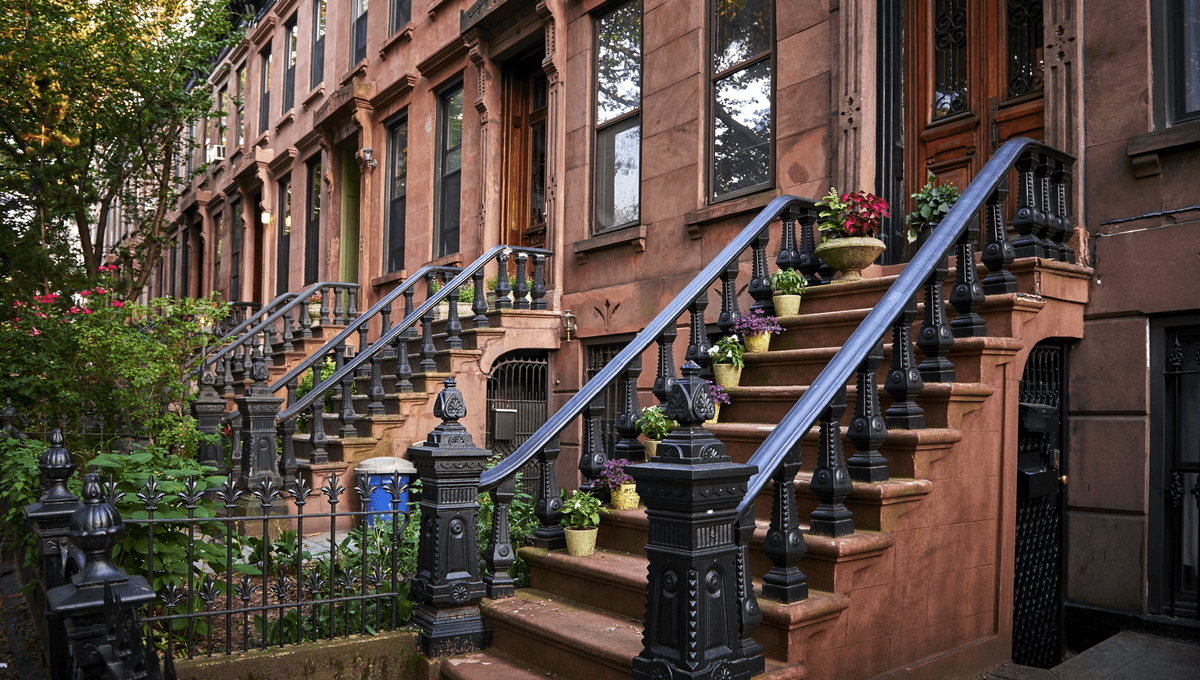
New York’s brownstones are practically a city landmark all on their own: those tall townhouses, complete with iconic “stoop” leading up to the elevated door, which are found throughout the city.
But have you ever wondered exactly why they have such a particular look? What made a bunch of architects more than 100 years ago all decide to put front doors halfway up the wall, thus dooming generations of New Yorkers to have to climb the stairs just to get inside their own homes?
The answer is unlikely to surprise those who love the city – or, indeed, those who abhor it. It comes down, as so many things throughout history do, to poop.
“By 1880, there were at least a hundred and fifty thousand horses living in New York, and probably a great many more,” wrote Elizabeth Kolbert in a 2009 article for The New Yorker. “Each one relieved itself of, on average, twenty-two pounds of manure a day, meaning that the city’s production of horse droppings ran to at least forty-five thousand tons a month.”
Residents and officials alike bemoaned the state of the New York streets: George Waring Jr, the city Street Cleaning Commissioner, described Manhattan as stinking “with the emanations of putrefying organic matter,” while another observer wrote that the streets were “literally carpeted with a warm, brown matting… smelling to heaven,” Kolbert notes. The problem was so bad, she explains, that “one commentator predicted that by 1930 horse manure would reach the level of Manhattan’s third-story windows.”
With all this poop coating the city streets, it’s not surprising that New York homeowners wanted to be as far away as possible from it. The stink alone must have been overwhelming, but it was also a health hazard: the feces was a breeding ground for billions of disease-carrying flies, and would have attracted rats and other vermin, hungry for the little specks of tasty undigested horse feed that lay inside that disgusting outer shell.
“In vacant lots, horse manure was piled as high as sixty feet,” wrote Stephen Dubner and Steven Levitt in the 2010 book Superfreakonomics. “It lined city streets like banks of snow. In the summertime, it stank to the heavens; when the rains came a soup stream of horse manure flooded the crosswalks and seeped into people’s basements.”
This wasn’t a problem unique to New York, by the way: in London, the problem was so bad that The Times declared a “Great Horse Manure Crisis of 1894”, predicting that “in 50 years, every street in London will be buried under nine feet of manure.”
Sounds unpleasant, doesn’t it? Which is why the stoop, originally brought over by Dutch settlers who had used them to cope with the Netherlands’ frequent flooding, got a new lease of life in New York – these days, as an iconic cultural landmark, but originally as a protector against poop.
Source Link: The Surprisingly Gross Reason New York Brownstones Look Like That